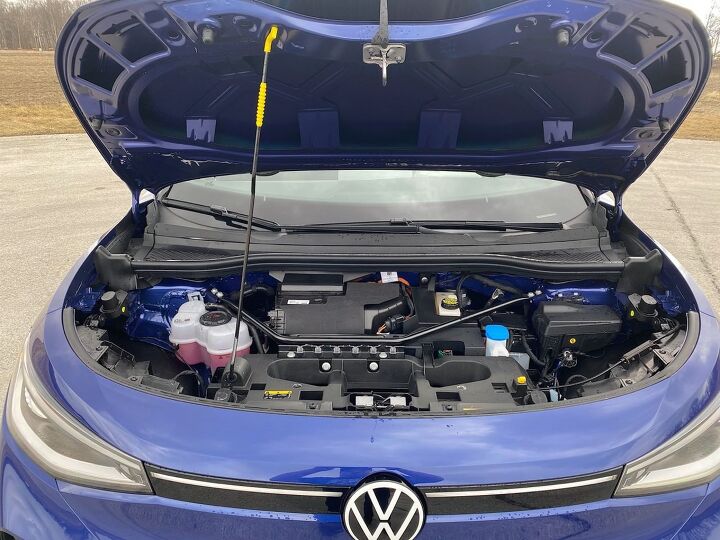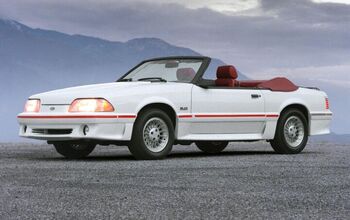Toyota BZ4X Vs Volkswagen ID.4: Which SUV EV is Right for You?


The headlines are true. The era of mainstream electric vehicles has arrived.
No longer reserved for the richest amongst us, EVs now satisfy larger portions of the market. Two such examples are the Toyota bZ4X and the Volkswagen ID.4. Both are different takes on a small, all electric SUV. But which one is right for you?
Get a Quote on a New Toyota bZ4X or Volkswagen ID.4To help you find out we have lined the two vehicles up side-by-side and taken a deep dive through each offering’s features, capabilities, and dimensions. It’s the Toyota bZ4X vs Volkswagen ID.4 in a battle of small EV SUV superiority. Read on to see our findings.
Cabin Space

Toyota bZ4X: Overall passenger space inside the bZ4X is rated at 94.4 cubic feet. The SUV gives occupants 38.6 inches of front seat head room and 37.1 inches for those in the back. Legroom is a generous 42.1 inches for front seat passengers, but rear seat riders only receive 35.3 inches. Shoulder room is similar between the two seats, with the front having 57.8 inches of space and the rear seat rated at 56.0 inches.

Volkswagen ID.4: The Volkswagen ID.4 is a bit larger inside than the bZ4X, with between 99.9 to 101.2 cubic feet of total passenger space depending on configuration. Front seat headroom is listed at 41.1 or 40.6 inches depending on whether or not the glass roof is installed. Similarly, rear seat headroom has two different figures as well, with 37.9 inches available standard or 38.4 inches with the glass roof present.
Up front, passengers get a bit less legroom in the ID.4, with 41.1 inches on tap, but rear seat passengers receive a more generous 37.6 inches of legroom compared to the bZ4X. Shoulder room is nearly identical to the Toyota, with Volkswagen offering 57.5 inches up front and 55.9 inches in the rear.
Bottom Line: The Volkswagen ID.4 does offer more space inside, most notably for rear seat passengers, with an advantage in both headroom and legroom. Up front, it is a bit more even. The bZ4X has more legroom, but the ID.4 has more headroom. In the opening battle of the Toyota bZ4X vs the Volkswagen ID.4, the slim advantage here goes to the Volkswagen.
Toyota bZ4X vs Volkswagen ID.4: Powertrains

Toyota bZ4X: The Toyota bZ4X can be had with front-wheel or all-wheel drive. The front wheel drive models have a 150 kW motor up front that is good for 201 hp and 196 lb-ft of torque. It sends power to the wheels through a single-speed transmission with an inverter.
The all-wheel drive model replaces the front motor with a 80 kW unit and adds a second 80 kW motor to the rear axle. This set up is good for a combined output of 214 hp and 248 lb-ft of torque. Being a corporate cousin of the Subaru Solterra, the bZ4X AWD features X-Mode that helps the vehicle trudge through messy road conditions.

Volkswagen ID.4: Like the bZ4X, the ID.4 can be had with two-wheel or all-wheel drive. Unlike the Toyota, this Volkswagen is rear-wheel drive when not equipped with all-wheel drive. An electric motor producing 201 hp and 229 lb-ft of torque is fitted to the rear axles on two-wheel drive versions. That motor remains for all-wheel drive models, and is joined by a 107 hp motor up front that makes 199 lb-ft of torque. This gives the ID.4 a total system output of 295 hp and 339 lb-ft of torque.
Regardless of which drivetrain and motor setup is selected, all ID.4s utilize a single speed converter transmission(s).
Bottom Line: Deciding between these two vehicle’s entry level models is a choice of personal taste. Do you prefer front-wheel or rear-wheel drive? And when only two wheels are driven, the ID.4 and bZ4X have similar levels of power. But when comparing all-wheel drive models, the Volkswagen has a decided advantage in terms of horsepower and torque.
Range and Efficiency

Toyota bZ4X: Driving range for the Toyota bZ4X depends on the trim and drivetrain. The model that can drive the furthest is the XLE FWD with a reported range of 252 miles on a single charge. Next, it’s the Limited FWD that can travel up to 242 miles. Switching to all wheel drive will hurt range as the XLE AWD has an official range of 228 miles while the Limited AWD offers 222 miles.
In terms of efficiency, this puts the XLE FWD at 119 MPGe, the EXL AWD at 104 MPGe, the Limited FWD at 114 mpg and the Limited AWD at 102 MPGe.

Volkswagen ID.4: Like the Toyota above, Volkswagen’s all-electric SUV has different driving ranges depending on trim and drivetrain. The vehicle with the most range is the ID.4 Pro capable of travelling up to 275 miles on a single charge. Next, it’s the Pro S that sees range drop slightly to 262 miles. The all-wheel drive ID.4 Pro is rated at 251 miles while the Pro S AWD drops to 245 miles.
SEE ALSO: 2021 Volkswagen ID.4 AWD First Drive Review: Broadening the EV AppealDespite the longer range, the efficiency figures for the ID.4 are actually worse than that of the bZ4X. The Pro RWD nets 107 MPGe while the Pro S RWD measures in at 102 MPGe. The Pro AWD is rated for 101 MPGe while the Pro S AWD only can achieve 95 MPGe.
Bottom Line: Regardless of trim, the Volkswagen ID.4 has a longer driving range. In fact, all-wheel drive models can drive as far as front-wheel versions of the bZ4X. But, the Volkswagen does require more electricity to recharge, so operating costs will be slightly higher. Since EVs are all about range, we give the slight advantage to the Volkswagen.
Cargo and Towing

Toyota bZ4X: The Toyota bZ4X can carry 27.7 cubic feet of gear behind the rear seats, a figure that drops to 25.8 cubic feet with the optional JBL sound system installed. Drop the rear seat backs down and that number increases to 56.9 cu ft. As of this writing, the bZ4X is yet to be rated to tow in North America.

Volkswagen ID.4: With the rear seats in place, the ID.4 can carry 30.3 cu ft. of cargo. Fold the seats down and that figure jumps up to 64.2 cu ft. Unlike the bZ4X, the ID.4 is rated to tow up to 2,700 lbs. when properly equipped.
Bottom Line: The Volkswagen ID.4 takes another category as it can not only haul more inside the vehicle, but is also rated to tow a trailer.
Toyota bZ4X vs Volkswagen ID.4: Safety

Toyota bZ4X: The bZ4X comes standard with Toyota Safety Sense and the Star Safety System. This includes all of the usual advance safety systems like pre-collision braking with pedestrian detection, lane departure assist, lane tracing assist, adaptive cruise control, and more. Stepping up to the Limited trim unlocks a few more safety systems like an upgraded rearview camera with dynamic guidelines as well as a 360 degree all around view camera system.
As of yet, this vehicle is has not been crash tested, so no ratings are available.

Volkswagen ID.4: The ID.4 also comes standard with a wide array of safety features. The Q.DRIVE system features forward collision avoidance with pedestrian detection, active side assist, lane assist, adaptive cruise control, and more. Like the Toyota, Volkswagen also includes items like high beam control and dynamic road sign display. But unlike the bZ4X, there is no 360 degree camera system available on the ID.4.
The vehicle does receive top marks from crash tests, earning a five star rating from the National Highway Traffic Safety Administration. It also earned a Top Safety Pick + rating from the Insurance Institute for Highway Safety.
Bottom Line: The bZ4X offers a bit more safety technology, albeit only on the higher trim models. The ID.4 earns top safety marks from various crash tests, and we assume the bZ4X will perform well once tested, but exactly how well is yet to be determined. For now, this category is left open until the bZ4X receives its ratings.
Tech and Features

Toyota bZ4X: The XLE model comes standard with a 18-inch alloy wheels, a panoramic sunroof, LED headlights, a 12.3-inch infotainment screen, and a secondary 7-inch display. The entry level XLE also includes Toyota’s Remote Connect telematics services with a free 3-year trial subscription and optional WIFI. The only option package on the XLE is a weather package that includes a leather-wrapped heated steering wheel and heated front seats.
SEE ALSO: 2023 Toyota bZ4X First Drive Review: The RAV4 of EVs is HereThe Limited trim level builds on the XLE and includes 20-inch alloy wheels, Multi-LED projector headlights, a power lift gate, heated and ventilated front seats, a power driver’s seat, and more. Like the XLE, the Limited can be further enhanced with a variety of packages that can be configured to include a JBL audio system, a split rear spoiler, and a weather package.

Volkswagen ID.4: The ID.4 Pro comes standard with 19-inch alloy wheels, LED exterior lighting, heated front seats, a heated steering wheel, dual-zone climate control, a partial power driver’s seat, a 10-inch infotainment screen, and more. Like Toyota, Volkswagen includes the brand’s telematics system, called Car-Net, with optional wifi.
The Pro S trim level upgrades to a 12-inch infotainment system, a panoramic sunroof, enhanced exterior LED lighting (including an illuminated VW logo), leatherette seating surfaces, dual power front seats, and more. Those looking for a bit more style on the ID.4 can opt for the Gradient package that adds 20-inch alloy wheels, a black painted roof, silver roof rails, and silver accents.
Bottom Line: Both vehicles come well equip with their entry level models, offering similar levels of standard equipment. Each trim is packaged differently, but when full optioned up, the two vehicles are equipped quite similarly. For the first time on our Toyota bZ4X vs the Volkswagen ID.4 competition, we have a tie.
Toyota bZ4X vs Volkswagen ID.4: Styling

Toyota bZ4X: The bZ4X features a fastback style, similar to that of so-called SUV coupes. Upfront the thin headlights continue into a small center line that features a minimal grille opening. The rear taillights extend into the rear fenders, slashing upwards and diagonally downwards. The small SUV sits high off the ground, and features extensive cladding around the wheel arches. This overall look highlights that the bZ4X is an electric SUV that’s meant to be taken off-road.

Volkswagen ID.4: The ID.4 features more conventional styling when compared to the bZ4X. The Volkswagen looks more crossover in design, with a high-riding hatchback profile. It has minimal side cladding and the lighting treatment is more conservative. The rear end does feature cool full length taillights we’re particularly fond off.
Bottom Line: As is always the case, styling is of personal opinion and one design is not necessarily better than the other. It’s up to you which you prefer between the Toyota bZ4X vs the Volkswagen ID.4. Do you fancy the futuristic, edgy bZ4X? Or the more conservative, flowing, sophisticated ID.4?
Pricing

Toyota bZ4X: Pricing for the bZ4X starts at $43,215 (including a $1,215 destination fee) for the XLE FWD. The XLE AWD raises the price to $45,295. On either XLE model, the Weather Package will set you back $500. The higher trimmed Limited model begins at $47,915 for front-wheel drive models. Step up to All-wheel drive and the price becomes $49,995. On the Limited, there are a variety of packages. Add them together, and the Limited Weather Package, JBL 9 Speaker System, and Split Roof Rear Spoiler package tops out at $1,130.

Volkswagen ID.4: The ID.4 slightly undercuts the Toyota with a starting price of $42,525 (including $1,295 destination fee) for the Pro RWD. Add all-wheel drive and the ID.4 surpasses the bZ4X with an asking price of $46,205 for the Pro AWD. The Pro S RWD starts at $47,025 while all-wheel drive models come in at $50,705. The Gradient package can be added to either Pro S trim for an additional $1,500.
Bottom Line: The Volkswagen ID.4 has a lower starting price for two-wheel drive models, regardless of trim. But step up to all-wheel drive and the pricing flips as the bZ4X is cheaper regardless of trim. When it comes to pricing, we have another tie.
Toyota bZ4X vs Volkswagen ID.4: Conclusion

Over the next few years the compact all-electric SUV market is going to grow exponentially. As two early entrants, the Volkswagen ID.4 and Toyota bZ4X are attractive options in their own-right. The Toyota offers impressive capability for mild-to-moderate off roading, a unique style, and a ton of standard safety features.
But in a battle of Toyota bZ4X vs. Volkswagen ID.4, we have to give the advantage to the Volkswagen here. More spacious, more powerful, and with a further driving range, the ID.4 edges the Toyota in most of the import EV categories.
Become an AutoGuide insider. Get the latest from the automotive world first by subscribing to our newsletter here.

A 20+ year industry veteran, Mike rejoins the AutoGuide team as the Managing Editor. He started his career at a young age working at dealerships, car rentals, and used car advertisers. He then found his true passion, automotive writing. After contributing to multiple websites for several years, he spent the next six years working at the head office of an automotive OEM, before returning back to the field he loves. He is a member of the Automobile Journalists Association of Canada (AJAC), and Midwest Automotive Media Association (MAMA). He's the recipient of a feature writing of the year award and multiple video of the year awards.
More by Mike Schlee































Comments
Join the conversation
Actually with the new add ons in the English dictionary both are now correct. Sigh what is the world coming to.
Interested in Toyota